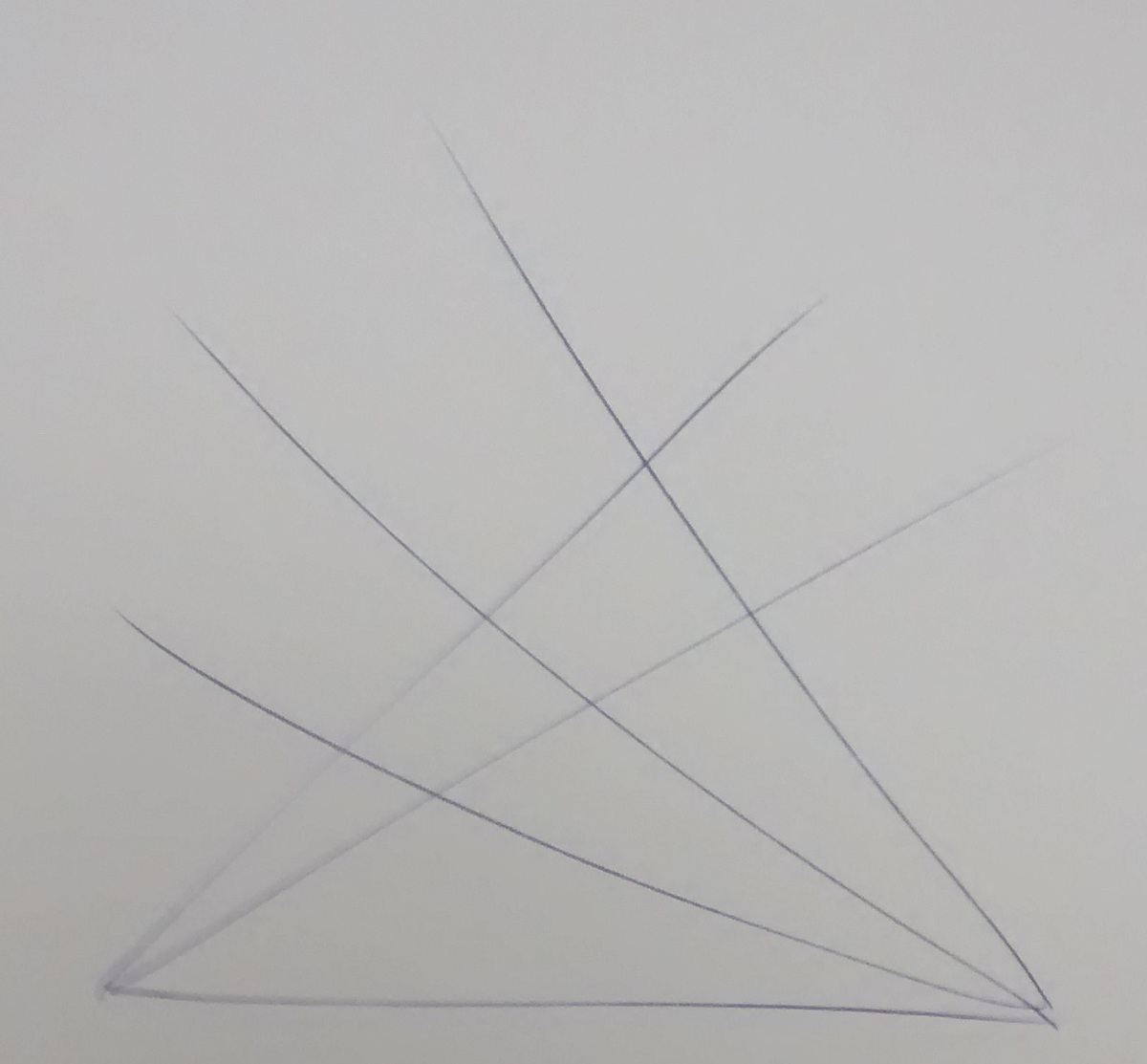Making triangle
Find the maximum number of regular triangles we can make using 6 sticks of the same size.
Assume: The sticks can't overlap and can only touch each other at their ends.
This section requires Javascript.
You are seeing this because something didn't load right. We suggest you, (a) try
refreshing the page, (b) enabling javascript if it is disabled on your browser and,
finally, (c)
loading the
non-javascript version of this page
. We're sorry about the hassle.
2 solutions
Yes you are absolutely correct... ;)
It doesn't mention that the triangles must be the same size, nor that they must only touch at the ends, so if we used the 6 sticks to make a Star of David there would be 8 triangles created, (6 smaller ones around the perimeter and 2 larger ones forming the main body).
Log in to reply
Ah, good point, @Brian Charlesworth !
Log in to reply
If the 'same size/only touch at ends' conditions are applicable then your answer hits the mark. If these conditions don't apply, then I'm wondering if there might be a more prolific arrangement than the Star of David.
Log in to reply
@Brian Charlesworth – Yeah, I bet there very well could be, especially since regular triangles were never specified...
Log in to reply
@Geoff Pilling – I've come up with a couple more 8-triangle arrangements, but none with more than 8. I think this will be my doodle-time project for the rest of the day. :) (I've written a report so that Shithil can edit the wording of his question to match the desired solution, if he so chooses.)
Log in to reply
Log in to reply
@Geoff Pilling – Indeed! This reminds me of this problem . The pattern starting at 3 sticks seems to go 1 , 3 , 8 , 1 5 , 2 7 , 4 2 , . . . , which has a match here and here .
Log in to reply
@Brian Charlesworth – Hahaha... You're reading my mind... That's where I got it from! :)
But wait a sec. Do you mean that for 5 matches it should be 8? Or 1+3+8=12?
For five matches I have 10 triangles, like in a pentagram.
Log in to reply
@Geoff Pilling – Well, if one of the negative-sloped sticks were removed from your diagram then the resulting arrangement would yield just 8 triangles, unless I'm missing something. But I agree that with a 5-pointed star we would end up with 10 triangles, which is interesting because the 6-pointed star, i.e., David's, only generates 8 triangles. The 7-pointed star generates at least 42 triangles, but I'm only finding 40 in an 8-pointed star and just 30 in a 9-pointed star. There are some variations in how to draw a 10-pointed star, some of which invoke some serious occult implications, soI think I'll stop here before I go too far down this rabbit hole... :)
Log in to reply
@Brian Charlesworth – Also, for four match sticks we can get four triangles by removing one of the negative sloped lines and the base in the figure above.
So, does the series go 1,4,10,... ?
Do we add successive triangular numbers each time?
So, can we generalize it to 1, 4, 10, 20, 35 ... ?
Not sure... Just speculation...
How do you know that 4 gives the maximum number? Why can't it be 5, 6, 7, or ... ?
Log in to reply
As per Geoff's and my discussion below, if no conditions are applied the answer can be as high as 1 5 . I have reported the question so that the conditions necessary for the posted answer to be correct are explicitly stated.
Log in to reply
I have resolved it... We have to make regular triangles..
Log in to reply
@Shithil Islam – This doesn't completely resolve it since, @Brian Charlesworth 's David's Star example contains 8 regular triangles.
@Shithil Islam – O.k., that helps, but in my Star of David example there are 6 regular triangles of one size and 2 larger regular triangles. I think that you'll still need to specify that the sticks cannot overlap, and can only touch each other at their ends.
Log in to reply
@Brian Charlesworth – okkkk I have also resolved it :-)
Log in to reply
@Shithil Islam – O.k., great, that looks good now. :)
@Shithil Islam – Yup, I think it looks good now! :)
@Brian Charlesworth – Yeah, I think that would do it!
Can you prove that the maximum number is above 4?
Log in to reply
No I can't. But the person who posted this solution should show why the answer cannot be larger than 4.
Log in to reply
@Pi Han Goh – I have posted this problem ;) I didn't get any solution that the maximum number is above 4.(I have spend about a month to solution this problem)
The most number of triangles formed by ( 2 n ) edges is ( 3 n ) , as demonstrated in Rivin's paper here . This occurs in a complete graph K n on n vertices. Since K 4 can be drawn in 3D as a tetrahedron, with 4 equilateral triangles, we are done showing that this indeed is the maximum value.
@Geoff Pilling @Pi Han Goh Here is the proof on why a tetrahedron gives the maximum number of equilateral triangles.

You can form them into a tetrahedron, like this to form 4 triangles: